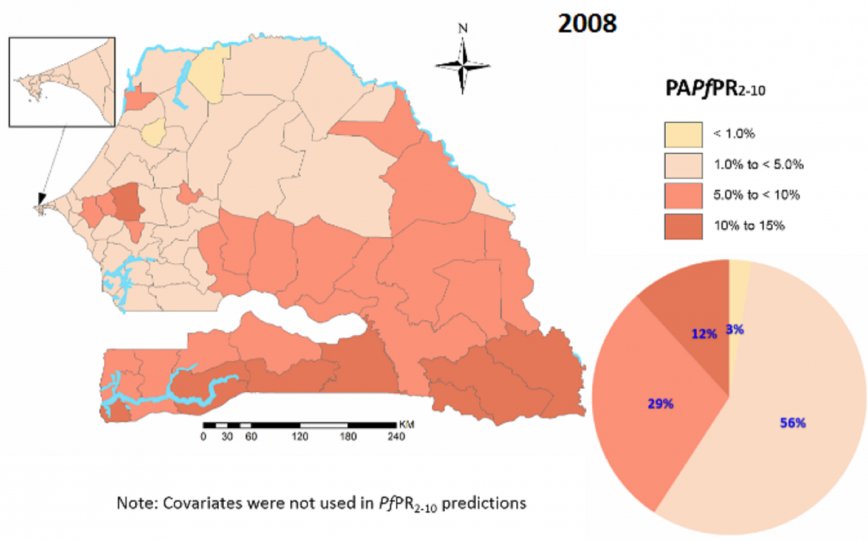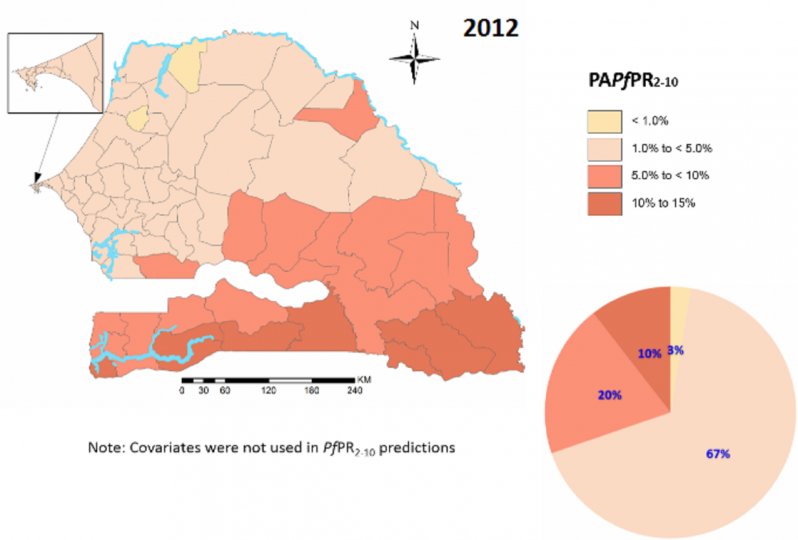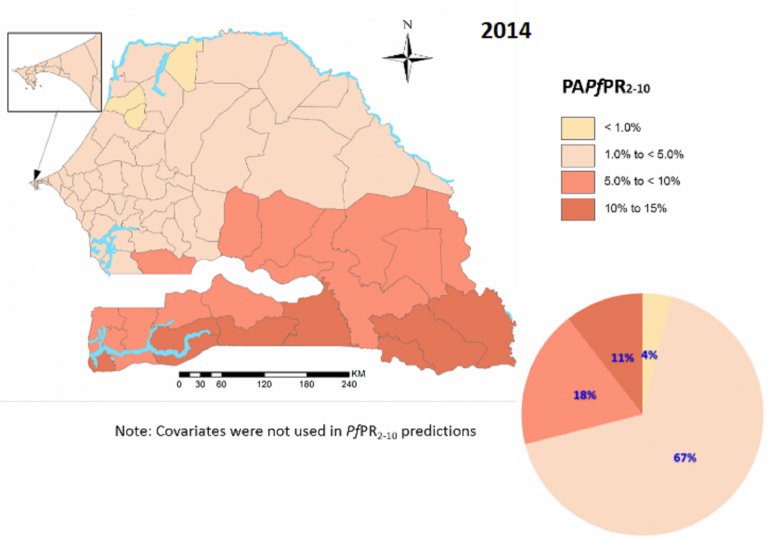Malaria in Senegal
Malaria is unequally distributed across the country owing to socio-demographic and ecological factors. The epidemiology of malaria in Senegal includes areas in the pre-elimination and control phases.
Mapping malaria risk
Large-scale household surveys (Demographic and Health Surveys (DHS) 14, Malaria Indicator Surveys (MIS)) have shown that overall malaria risk has declined in Senegal between 2008 and 2014. These surveys found 5.9% of children under 5 years infected with Plasmodium falciparum in 2008, falling to 1.2% in 2014. The prevalence of infection varies across the regions, with higher figures up to 5.9% in the southern regions to 0.1% is some western and northern regions.
The proportion of the population living at low risk of malaria (PfPR2-10 1-5%) has increased from 56% in 2008 to 67% in 2014, with a corresponding decrease in the population living at higher (especially PfPR2-10 5-10%) levels of risk.
LINK activities
During Phase 1, an epidemiological malaria control profile was produced for Senegal in collaboration with the National Malaria Control Programme (Programme National de Lutte contre le Paludisme - PNLP) in 2015.
LINK assembled community-based surveys of malaria parasite prevalence from a variety of sources including peer-reviewed journals, international and national ministry of health and academic archives, personal correspondence and more recent national household survey samples. Seven hundred and eight-five geo-located surveys were undertaken between 2008 and 2014 and were used to analyse the malaria prevalence.
As part of Phase 2 work LINK has collated evidence from 378 published articles or MSc/PhD theses and 79 implementation reports/policies.




